1. How to Use the Visual Editor
Use visual experiments to test changes without App Store updates
To learn more about no-code A/B testing for mobile apps, please view our video tutorial here.
Before you create your first experiment, make sure you have:
Supported Elements
Taplytics supports mobile visual editing on native apps built on iOS and Android. The elements listed below are elements that we've tested and are known to support. This is not meant to be an exhaustive list and every App can be built differently.
Android
Below is a sample of native view elements that we can support and their sub-classes:
View elements: width/height/background/visibility/alpha/padding
TextView: text, text size, text colour, hint, gravity
ImageView: swapping images, scale type, alpha, width, height, swapping out images and more.
Button: text, hint text, text size, color, alignment, width/height, padding, hidden, background color
Native views can also be modified in nearly every layout and anything contained within them which includes:
- ListViews
- RecyclerViews
- ViewPagers
- DialogFragments
- Fragments or SupportFragments
We do not support Visual Editing on:
- AndroidX - AndroidX may not allow some views such as ListViews and RecyclerViews to be Editable
- Other examples include: progress bars, clocks, media controllers, WebViews, calendars, phone diallers
iOS
UIView: We can hide or unhide this element
UICollectionViewCell: Might lead to some inconsistent results, better to target UIView instead.
UIButton: We can hide/unhide this element, change the position (move the button around) and change the colour. We can also swap out the UIButton with an image. You’ll need to be cognizant of different device sizes and provide 1x, 2x and 3x assets
UILabel: We can hide/unhide this element. We can also swap out the text/copy.
UIImageView: We can hide/unhide this element, as well as swap out images. You’ll need to be cognizant of different device sizes and provide 1x, 2x and 3x assets
UITableViewCell: Can hide/unhide cells in TableView.
We do not support Visual Editing on:
- Apps built on Swift UI
- tvOS
For more information on which elements are compatible with the Visual Editor or some common use cases, check out our documentation here:
Create your experiment
If you're still reading this, that means you're ready to dive in and create a visual experiment. Awesome, let's go! Start by creating a new experiment.
Step One: Connect Your Device
The first thing you need to do is connect your device. This will allow you to make real-time changes within your app.
To get started you need to pair your device. In the image below there are a few options you can use to do this: Email / Text / Ping Dev Devices.
We suggest sending a text first - it's super easy! Once you input your number you'll receive a text from Taplytics. Open that link and you'll be directed back to your app and you should see a blue border around your app.
If you receive any error messages or it just doesn't work - please review the Pair & Manage your Devices doc with your dev team or contact [email protected] for more help.
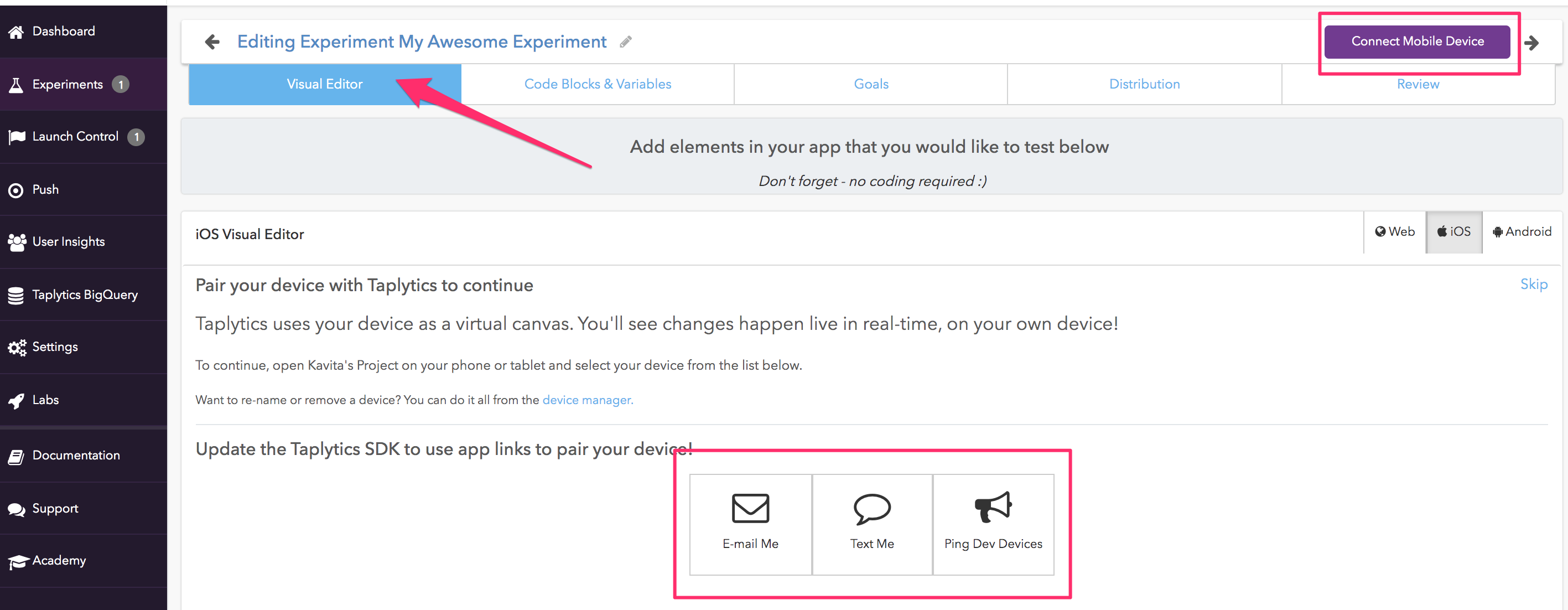
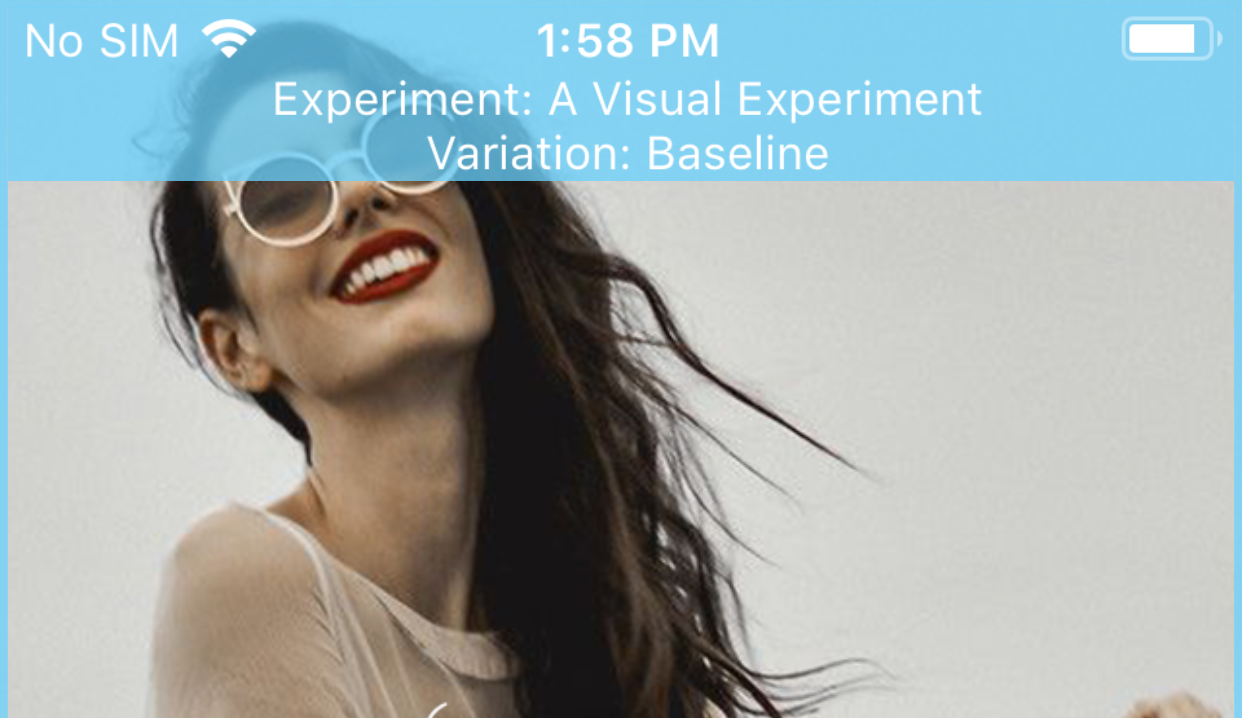

Create your Visual Experiment
Now that your device is connected, you start to make changes to your app!
1. Name your first variation
Before adding elements to your experiment, you should give your first variation a name.
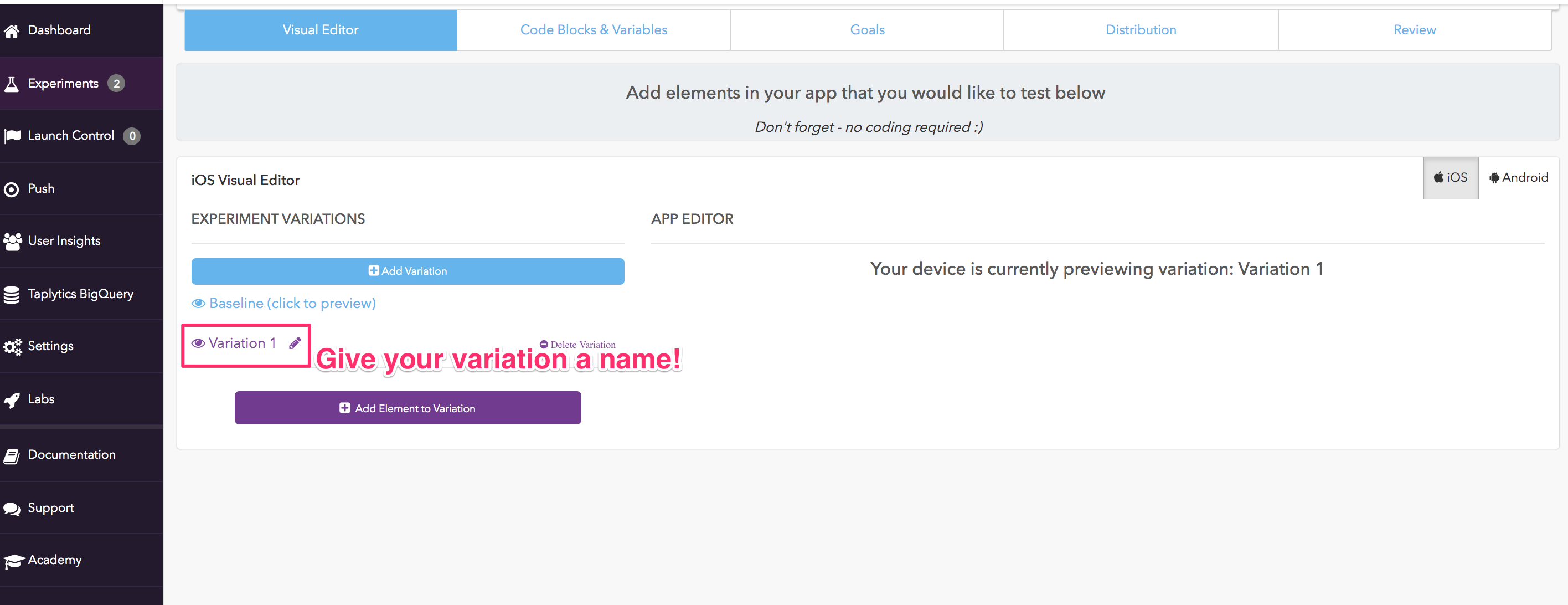
2. Add elements to test
The first thing to do is navigate to the part of the app where you'd like to make a change. If you want to change the copy of a Sign Up or Check Out button, navigate to that area of the app so you can see the element you'd like to edit.
Next, click the "Add Element to Variation" button.
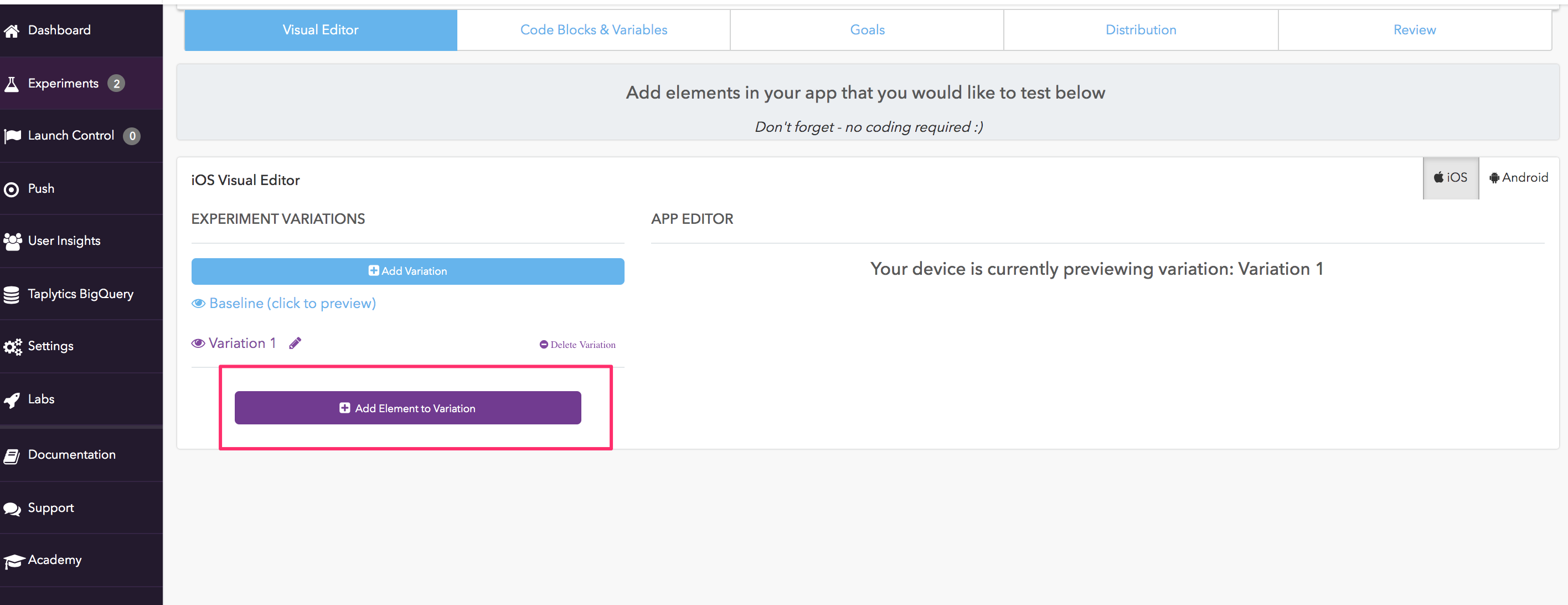
Once you click that button the blue border on your phone will change to green! You're now able to select the specific thing you'd like to edit.
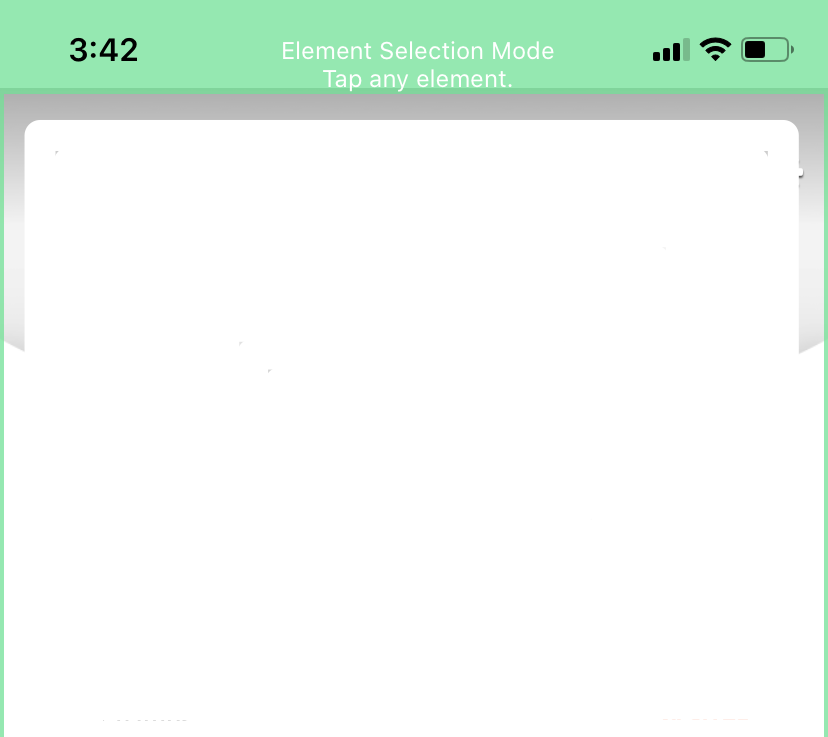
The Taplytics Dashboard will look like this:
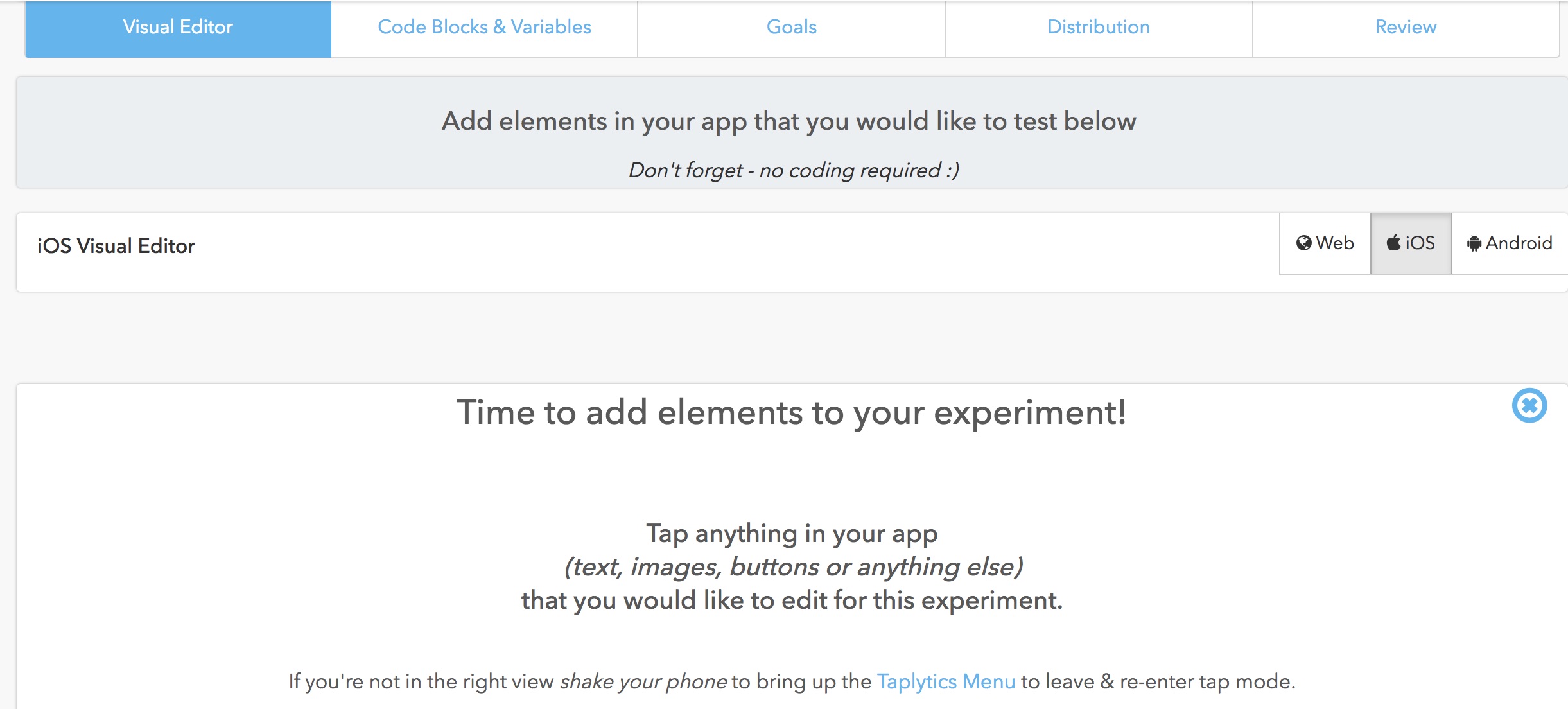
You can now click on the specific element you'd like to edit.

3. Edit your elements
Once you have added the elements that you want to edit, you can select them one at a time to change their properties. The properties that can be edited are on the right of the element list.
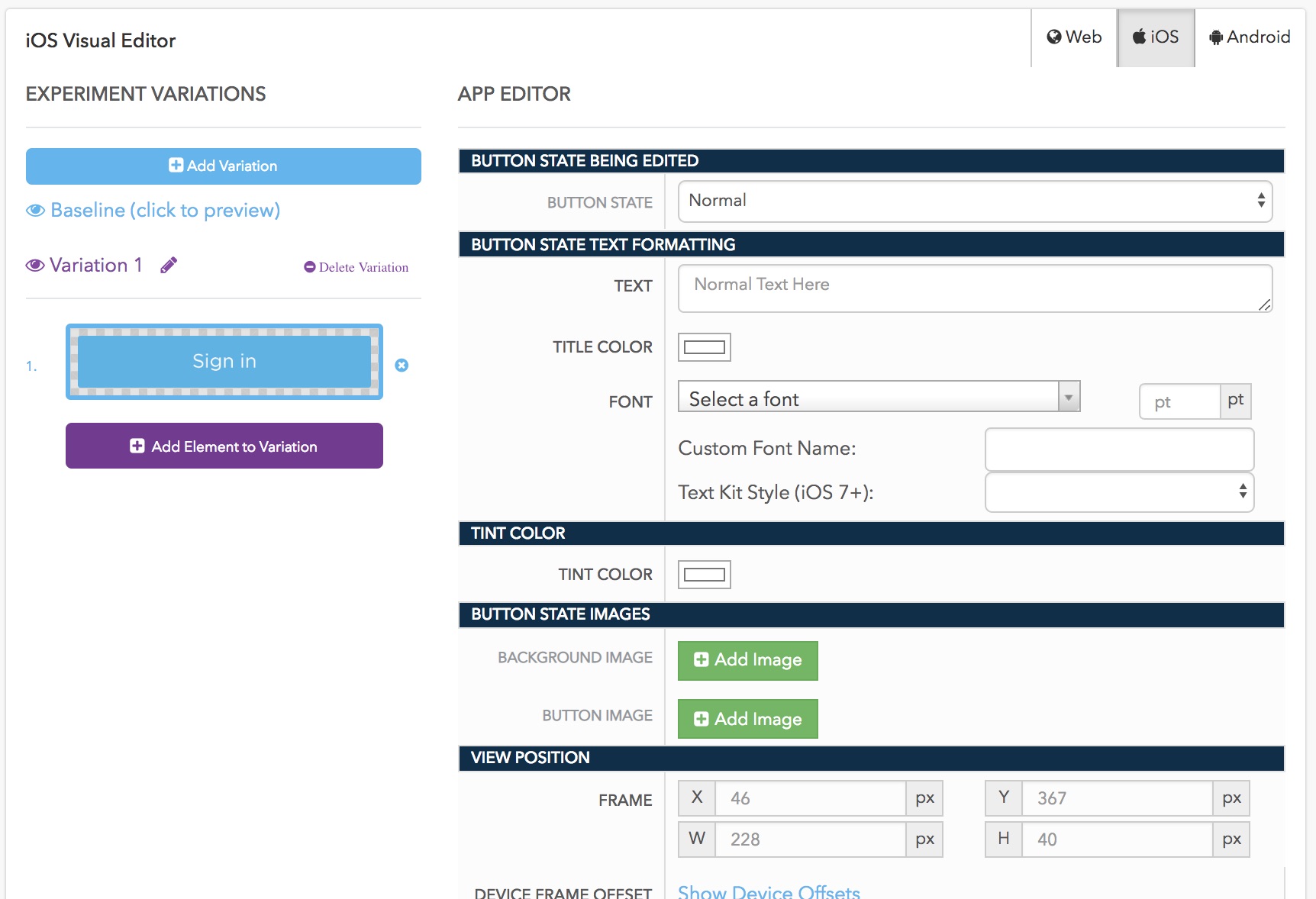
Taplytics only shows you the properties that you can edit for that element. As you change the properties, the changes show up right on your device, instantly.
4. Add additional elements or more variations
If this is an A/B test and you've created one variation then you're all done! Congrats! You've used the visual editor!
If you'd like to make more edits within this variation simply continue navigating to the part of the app you'd like to edit and keep using the Add Element to Variation. You'll be able to add as many elements to that variation as you need.
The Add Variation button will allow you to create an additional variation so your test will have Baseline / Variation 1 and Variation 2. You can add as many as you like.
Give each variation a name like we showed you in the previous steps. You can cycle through the different variations by clicking on their name - this also changes the variation being previewed on your paired device.
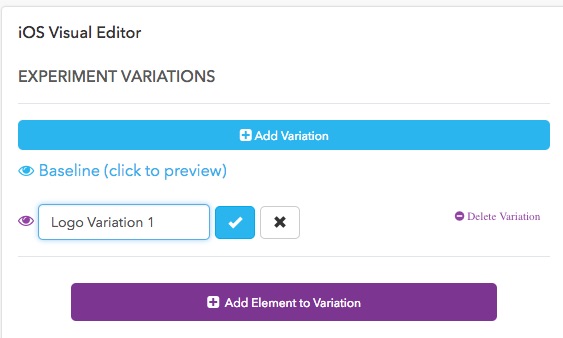
By now, you should have your variations set with your elements edited the way you like them. If you're ready to move on, click the "Goals" button in the top-right corner.
Keep moving through the experiment work flow!
What's next? Move to the Code Blocks and Variables tab or start creating goals!
-
Leveraging Code Blocks and Variables (Web Code-Based Experiments)
-
Creating Goals
-
Specifying the Audience Distribution
-
Reviewing the experiment set up and launching it to users!
Updated almost 3 years ago
